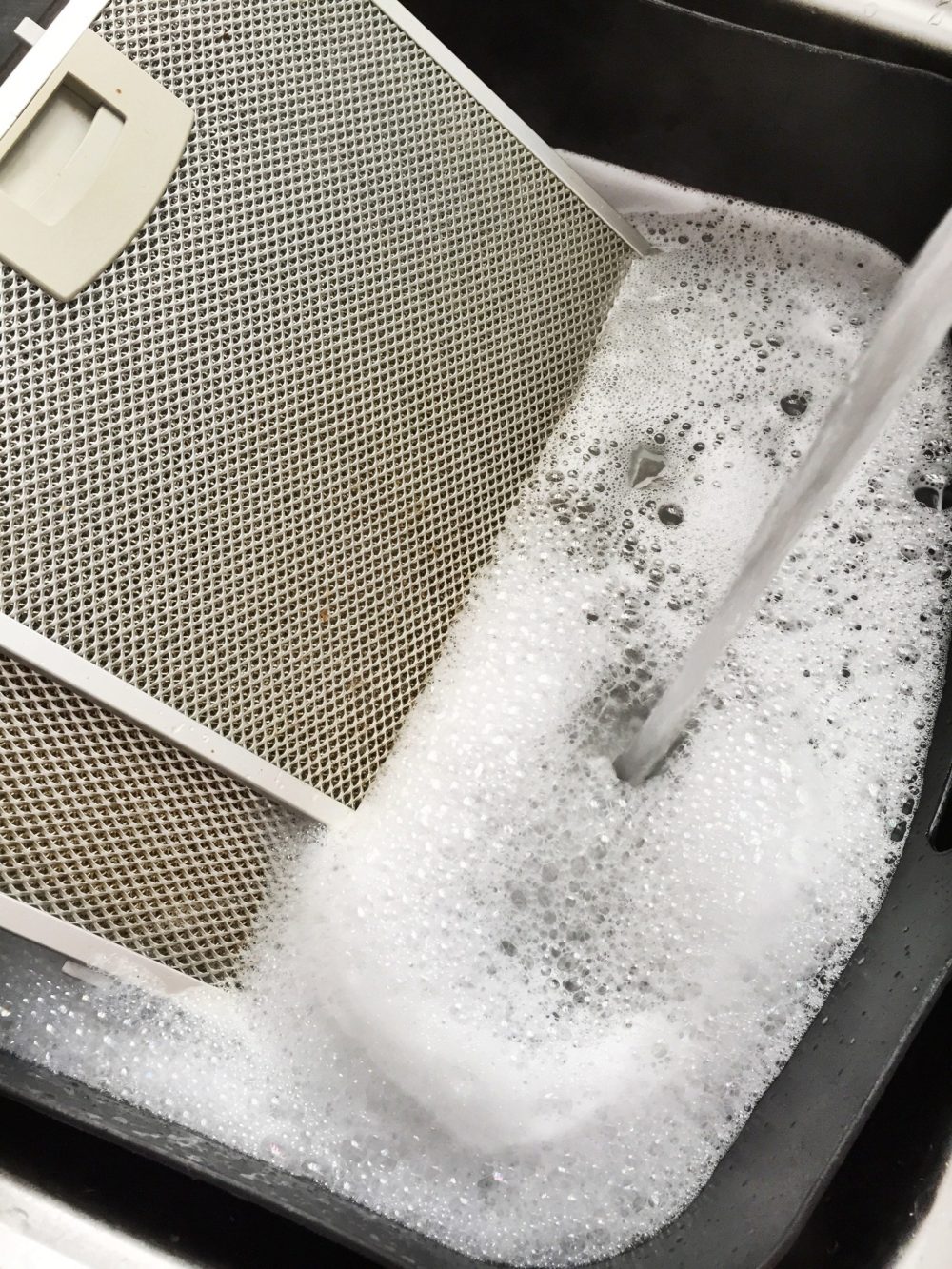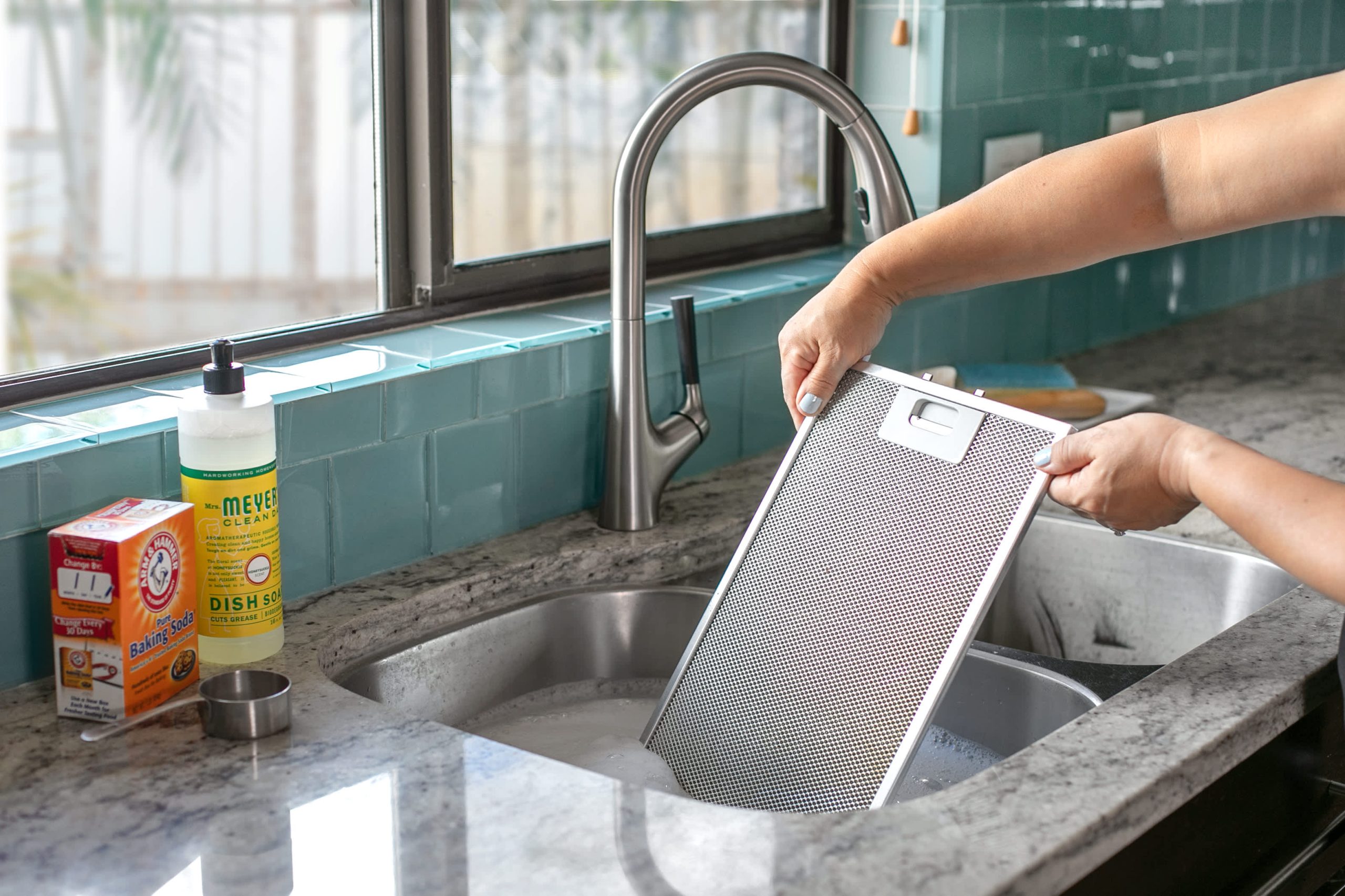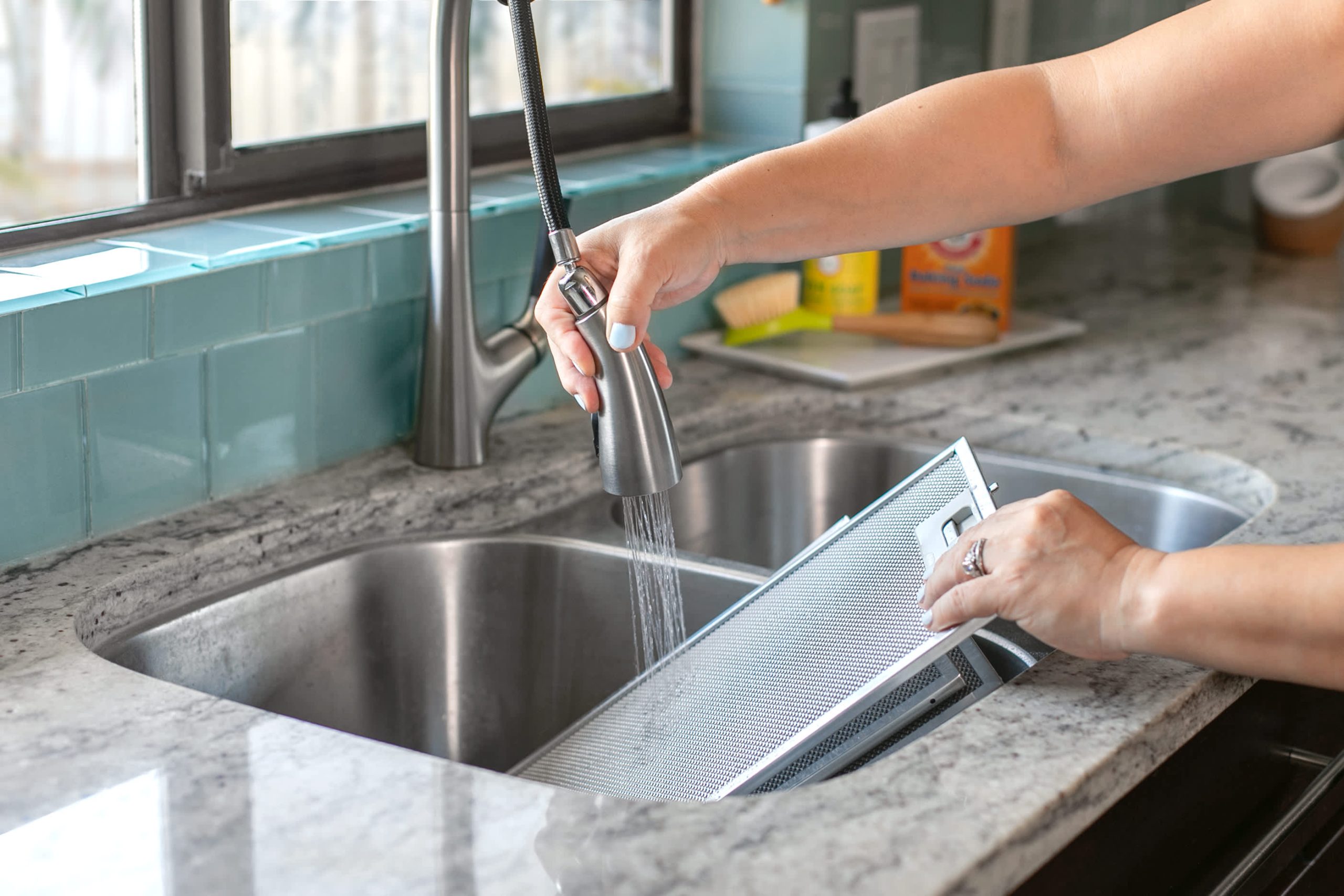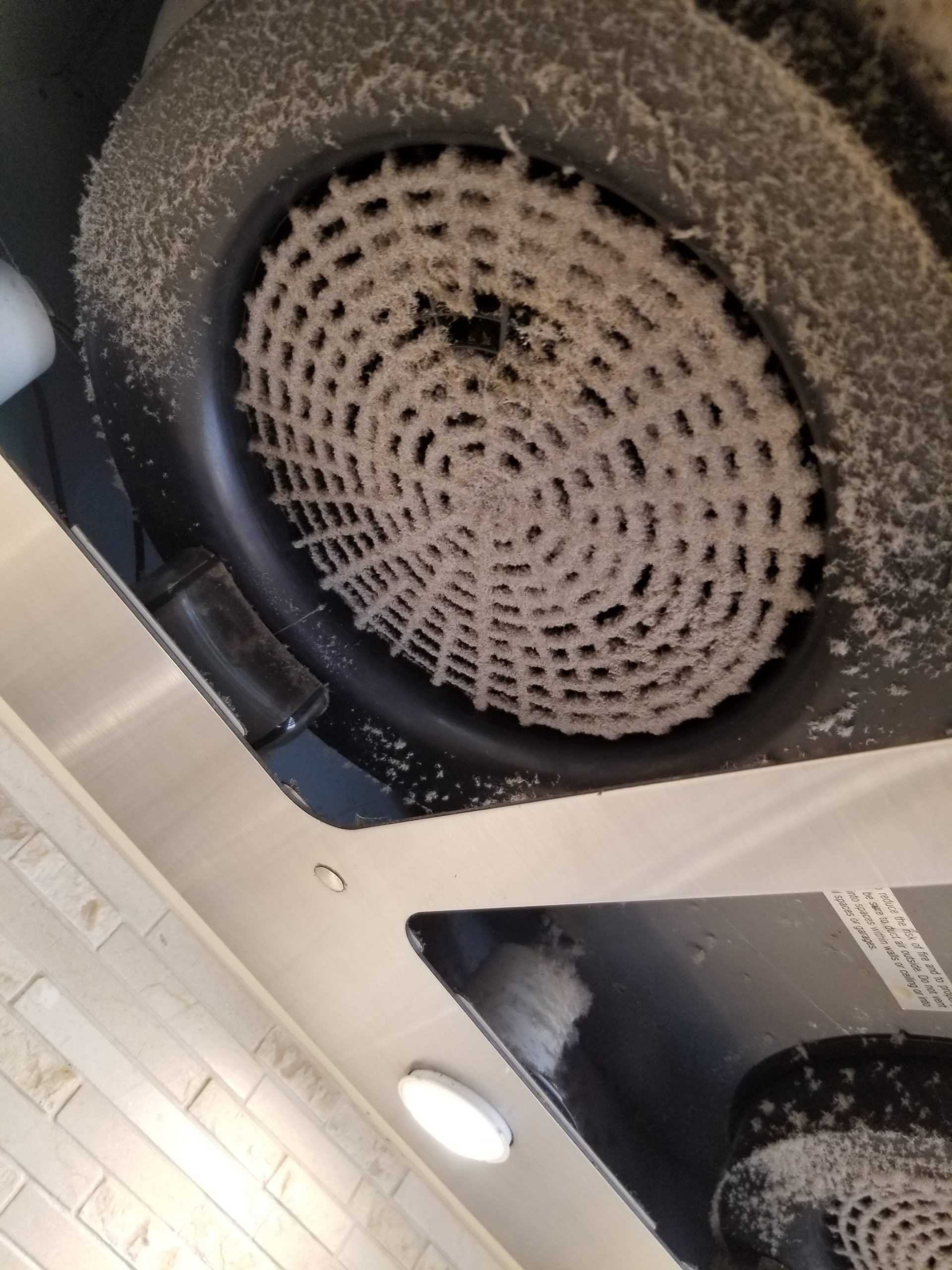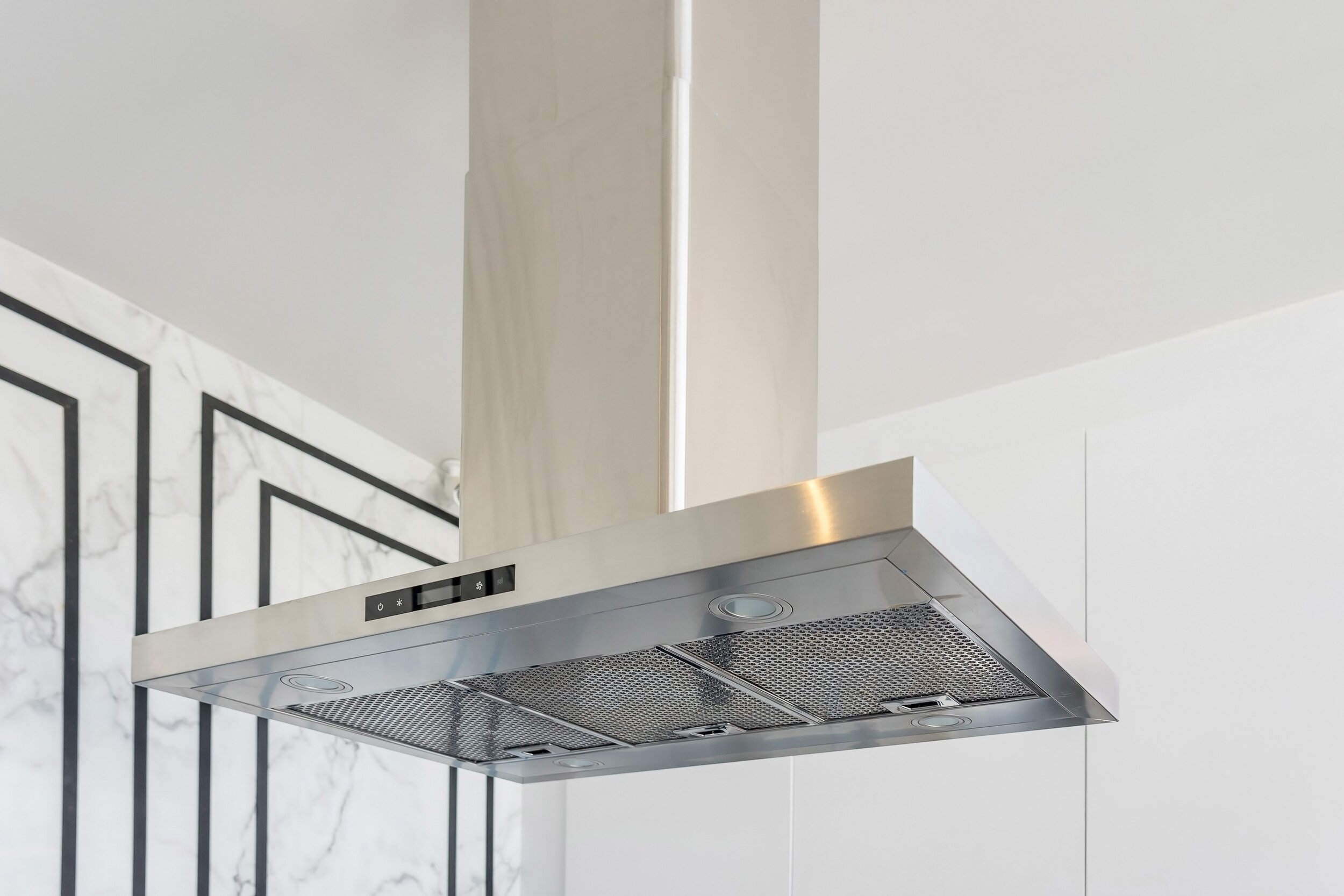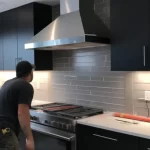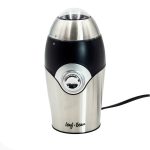Introduction
Cleaning your range hood fan is an essential part of maintaining a clean and safe kitchen environment. Over time, grease, dust, and other airborne particles accumulate on the fan and filter, which can reduce the efficiency of your hood and potentially pose a fire hazard. Regular cleaning ensures that your range hood operates effectively, keeping your kitchen well-ventilated and free from excessive smoke, odors, and grease buildup. Below is a comprehensive guide on how to properly clean your range hood fan.
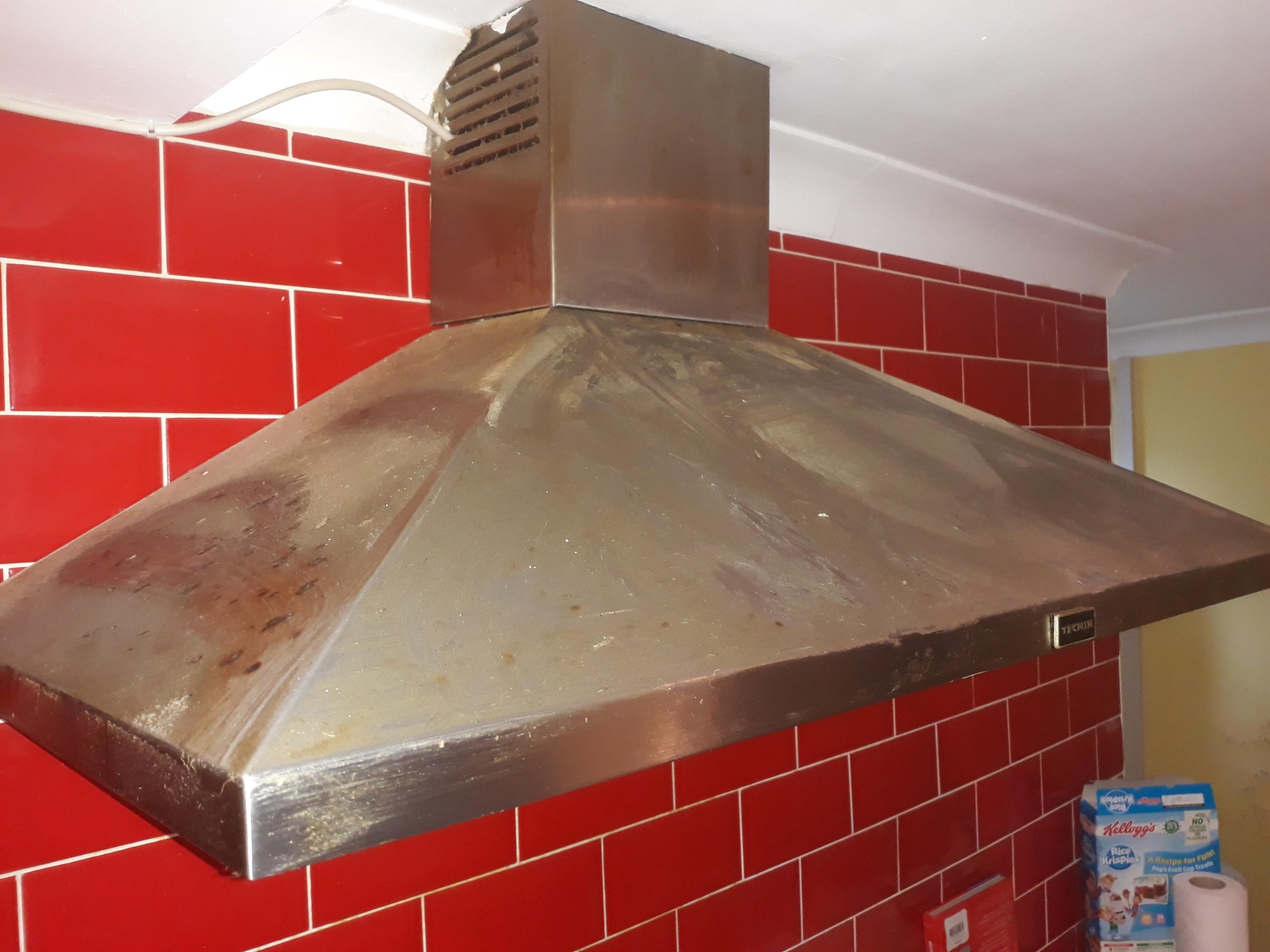
Tools and Materials You’ll Need
- Rubber gloves
- Screwdriver (if necessary)
- Soft sponge or microfiber cloth
- Dish soap
- Warm water
- White vinegar
- Baking soda
- Plastic scraper or old credit card
- Paper towels or clean cloths
- A large bowl or sink for soaking
- Non-abrasive scrub brush or toothbrush
- Vacuum cleaner with a brush attachment or canned air
- Degreaser (optional)
Preparing to Clean
- Turn Off Power: Safety first! Ensure the range hood fan is turned off and, if possible, unplug it from the power source.
- Remove the Filter(s): Most range hoods have filters that can be easily removed for cleaning. Depending on the model, they might slide out, lift off, or require screws to be undone.
Cleaning the Filters
- Soak in Soapy Water: Fill a large bowl or your sink with warm water and add a few drops of dish soap. Place the filters in the solution and let them soak for about 15-30 minutes. This helps loosen up the grease.
- Scrub Away Grease: After soaking, use a non-abrasive scrub brush or an old toothbrush to gently scrub away any remaining grease and grime. For stubborn stains, you can make a paste of baking soda and water and apply it directly to the stains before scrubbing.
- Rinse and Dry: Rinse the filters thoroughly under running water until all soap and residue are gone. Shake off excess water and let them air dry completely before reinstalling.
Cleaning the Fan and Housing
- Remove Loose Debris: Using a vacuum cleaner with a brush attachment or canned air, gently remove any loose dirt, dust, and debris from the fan blades and inside the hood housing. Be cautious not to damage any electrical components.
- Apply Cleaning Solution: Mix equal parts warm water and white vinegar in a spray bottle. Spray this solution onto the fan and interior surfaces of the hood, avoiding any electrical parts.
- Scrub and Wipe Down: Using a soft sponge or microfiber cloth, wipe down the surfaces you’ve sprayed, paying extra attention to greasy areas. For tough spots, you may need to use a bit more elbow grease or a gentle degreaser following the product instructions.
- Detail Cleaning: Use a plastic scraper or an old credit card wrapped in a cloth to carefully scrape off any hardened grease from edges or corners without damaging the surface.
- Final Wipe and Dry: Once everything is cleaned, give the surfaces a final wipe with a clean, damp cloth, then dry with a towel or let air dry.
Reassemble and Maintenance Tips
- After everything is completely dry, reassemble your range hood by putting the filters back in place. Ensure they are securely installed.
- Regular maintenance is key. Aim to clean your range hood fan and filters every 6 months or more frequently if you cook often.
- Consider using a degreaser spray on the exterior of the hood and control panel to keep it looking clean and shiny.
- Don’t forget to check the manufacturer’s instructions for specific cleaning recommendations tailored to your range hood model.
By following these steps regularly, you’ll ensure that your range hood fan operates at peak efficiency, contributing to a cleaner and safer kitchen environment.
Additional Tips and Tricks
Deep Cleaning Schedule
In addition to the regular maintenance mentioned above, consider scheduling a deep clean of your range hood fan and ducts annually. This may require professional assistance to properly dismantle, clean, and reinstall the system, especially if it’s a ducted range hood. Duct cleaning can prevent the buildup of grease and reduce the risk of fires.
Filter Maintenance
If your range hood uses replaceable filters instead of washable ones, make a note of when they were last replaced and plan to replace them according to the manufacturer’s guidelines or as needed. Old, worn-out filters can become less effective at trapping grease and can even restrict airflow.
Natural Cleaning Solutions
For those who prefer natural or eco-friendly cleaning methods, you can substitute commercial degreasers with homemade solutions. For instance, a mixture of hot water and baking soda can act as a mild abrasive for stubborn grime, while white vinegar is an excellent natural degreaser and deodorizer.
Ventilation Check
While cleaning, it’s a good opportunity to inspect the ventilation system for any blockages or damage. Ensure the vent to the outside is clear of debris, such as leaves or bird nests, which can obstruct the airflow and reduce the hood’s effectiveness.
Lighting Maintenance
Range hoods often include built-in lighting. If your lights are dimming or have burned out, replace them with appropriate bulbs. Turn off the power and consult the manual for bulb specifications to ensure you use the correct type and wattage.
Exterior Cleaning
Don’t neglect the exterior of the range hood. Use a mild detergent solution to wipe down the outer surfaces, including the control panel. For stainless steel hoods, use a specialized stainless steel cleaner to maintain the finish and prevent water spots.
Safety Precautions
Always prioritize safety during the cleaning process. Wear rubber gloves to protect your skin from cleaning chemicals and hot water. If using a ladder to reach high areas, ensure it is stable and someone is nearby for assistance if needed. Avoid using harsh abrasives that could scratch the surface of your range hood.
Professional Help
If you encounter any complex issues during the cleaning process, such as difficulty removing parts or reassembling, or if there’s significant damage to the hood, it’s best to call a professional for assistance. They have the expertise and tools to handle such tasks safely and efficiently.
Conclusion
By incorporating these additional tips into your cleaning routine, you’ll not only keep your range hood functioning optimally, but also contribute to a healthier cooking environment for you and your family. Regular care and maintenance will extend the lifespan of your appliance and help avoid costly repairs or replacements down the line.
